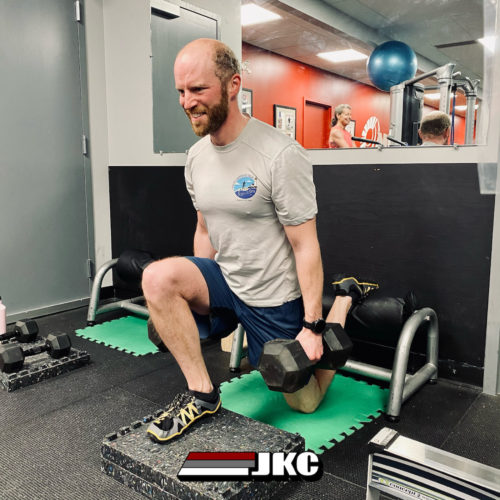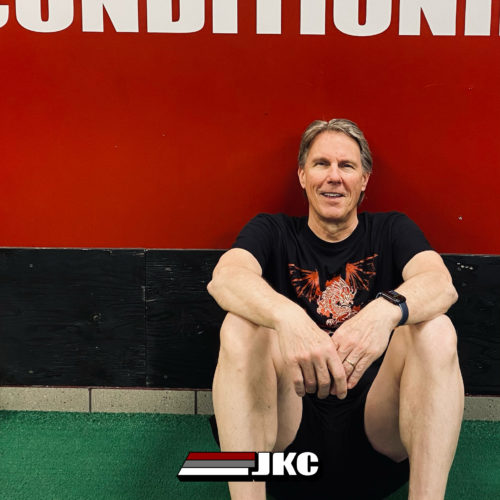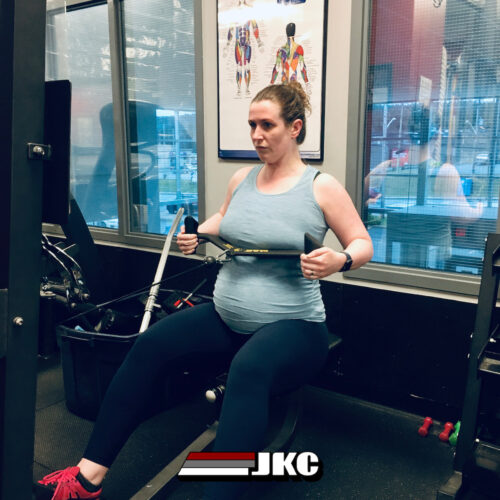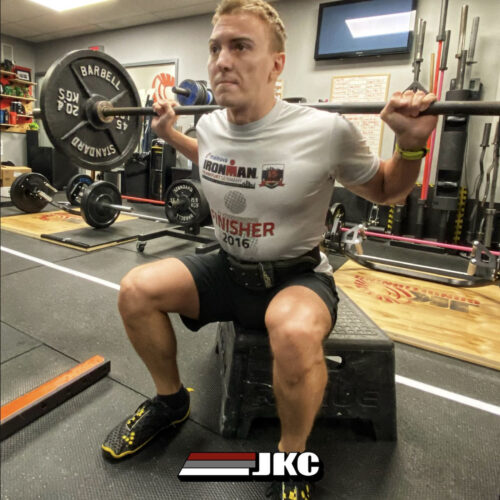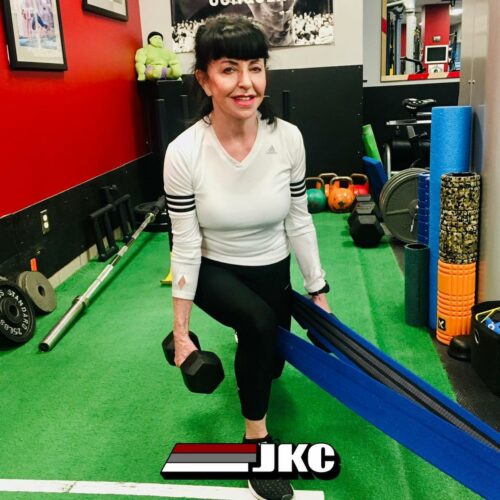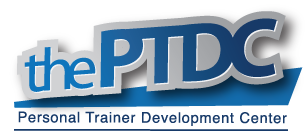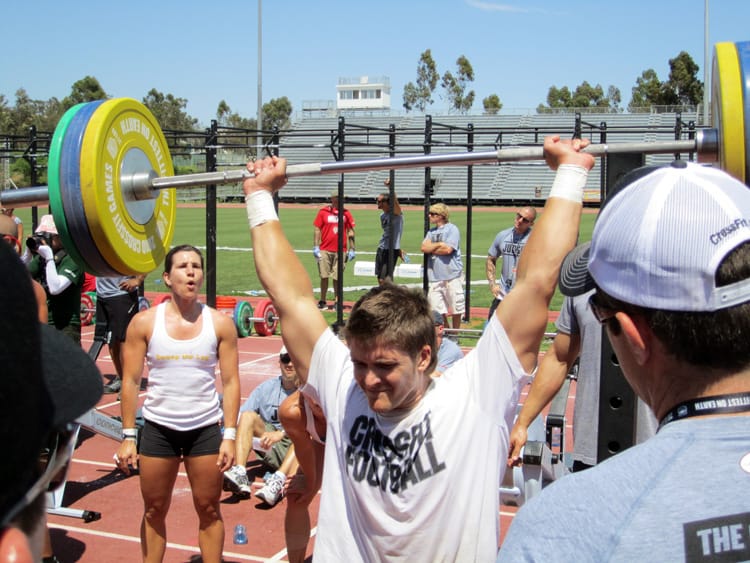
A study was published in the Journal of Strength and Conditioning Research today by Smith et al. (ahead of print) titled: Crossfit-based High Intensity Power Training Improves Maximal Aerobic Fitness and Body Composition.
Here’s the Pubmed link and the Abstract:
The purpose of this study was to examine the effects of a crossfit-based high intensity power training (HIPT) program on aerobic fitness and body composition. Healthy subjects of both genders (23 males, 20 females) spanning all levels of aerobic fitness and body composition completed 10 weeks of HIPT consisting of lifts such as the squat, deadlift, clean, snatch, and overhead press performed as quickly as possible. Additionally, this crossfit-based HIPT program included skill work for the improvement of traditional Olympic lifts and selected gymnastic exercises. Body fat percentage was estimated using whole body plethysmography and maximal aerobic capacity (VO2max) was measured by analyzing expired gasses during a Bruce protocol maximal graded treadmill test. These variables were measured again following 10 weeks of training and compared for significant changes using a paired t-test. Results showed significant (P<0.05) improvements of VO2max in males (43.10±1.40 to 48.96±1.42 ml/kg/min) and females (35.98±1.60 to 40.22±1.62 ml/kg/min) as well as decreased body fat percentage in males (22.2±1.3 to 18.0±1.3) and females (26.6±2.0 to 23.2±2.0). These improvements were significant across all levels of initial fitness. Significant correlations between absolute oxygen consumption and oxygen consumption relative to body weight was found in both men (r=0.83, P<0.001) and women (r=0.94, P<0.001), indicating HIPT improved VO2max scaled to body weight independent of changes to body composition. Our data shows that HIPT significantly improves VO2max and body composition in subjects of both genders across all levels of fitness.
HIPT
In the experiment, the researchers referred to the training program as “crossfit-based high intensity power training” or HIPT for short. Differentiating HIPT from HIIT (high intensity interval training), the researchers state that HIPT “includes a lack of a prescribed rest period, focus on sustained high power output” and use of multi joint movements. HIPT also incorporates multi-joint functional lifts such as the squat, deadlift, clean, snatch and overhead press with the addition of gymnastic based movements (Smith et al., 2013). The researchers go on to explain the concept of a WOD (workout of the day) describing how they are “a random selection of multiple joint exercises” that are supposed to be performed as quickly as possible.
Nonetheless, it all appears fine and dandy from just reading the abstract but after reading the actual paper, I found out some things not included in the abstract.
- -stats were run on the entire group and also on subsets of participants that were divided up by initial aerobic fitness and body composition values (based on normative data for age and gender)
- -out of 54 original participants, 43 fully completed the 10-week program (11 dropped out: 2 with time concerns and 9 from sustaining injury = 16% of total recruited subjects, despite being supervised by American College of Sports Medicine clinical exercise physiologists and the fact that the 10-week program was “deliberately periodized”)
- -the training protocol was not provided (therefore, I’m not sure if kipping pull ups or other traditional Crossfit exercises were included or not)
- -subjects were following a “Paleolithic” type diet prior to and following completion of the training program (but was not controlled for)
So that leaves me with some questions. (I’m in the middle of my research in my Masters program and as a researcher, you can’t account for every single variable, it’s practically impossible! But it still warrants some discussion.)
Obviously this program was effective at improving VO2 and body composition in both sexes, but would the results have differed if the participants were not on a Paleo-type diet? Would it have been beneficial to have the diet controlled and monitored?
If you’re a Crossfit-beginner, I strongly caution you to learn how to move first with light weight before adding more weight and speed.
16% drop out!? That’s a bit much don’t you think? So this tells us, if you’re not ready for this type of intensity, maybe you shouldn’t be doing a Crossfit-based training program. “Skill training” was provided to the subjects prior to the 10-week training program, but how effective was their technique to begin with and how good did it get after the skill training? If you’ve ever done as many reps as possible in a timed-set, you and I know your form (and mine) would go out the window after a few sets. If you can keep it together longer, you’re probably not going to get injured. This especially applies to the clean and the snatch which are considered very technical lifts. A beginner thrown into high rep cleans or snatches, even after some skill practice is a recipe for disaster (in my opinion). I have a hard enough time doing sets of 5 cleans or snatches perfectly – I couldn’t imaging compounding that with fatigue, other exercises and a time-limit. However, if you’re technically proficient, then I don’t see too much of a problem with this type of programming, especially if you plan to compete at Crossfit competitions (hence sports specific training).
Lastly, I have a problem when a Crossfit-based program is prescribed to the wrong person. People who are not technically proficient, have a current injury or a predisposition for a future injury should take down the intensity a few notches to keep their injury risk low (think cost to benefit ratio). Perhaps they can still participate but with the workout regressed to their level. Also, as I said above, it would have been great to see the actual 10-week program and how they periodized it.
Wrap up
So, high intensity training with weights and compound lifts with minimal break (combined with a paleo-based diet) can work wonders for your VO2 and body composition. But you have to survive the training program without getting injured. If you can survive it and enjoy it, have at it. If you’re a beginner, I strongly caution you to learn how to move first with light weight before adding more weight and speed.
Furthermore, this is a prime example, as pointed out by my buddy Josh Henkin, that you can’t just read abstracts. To get the entire story, you have to read the actual paper.
-JK

